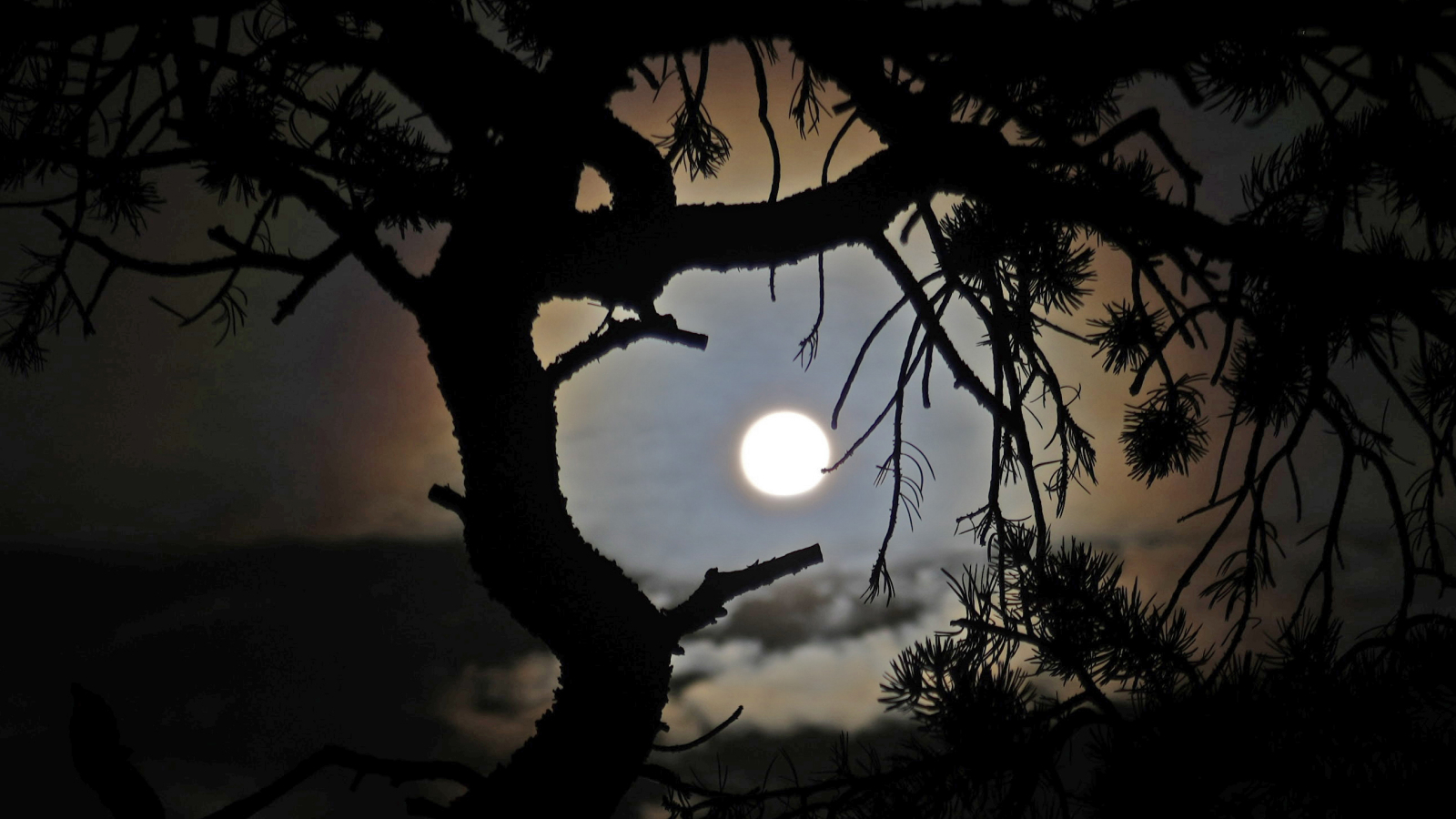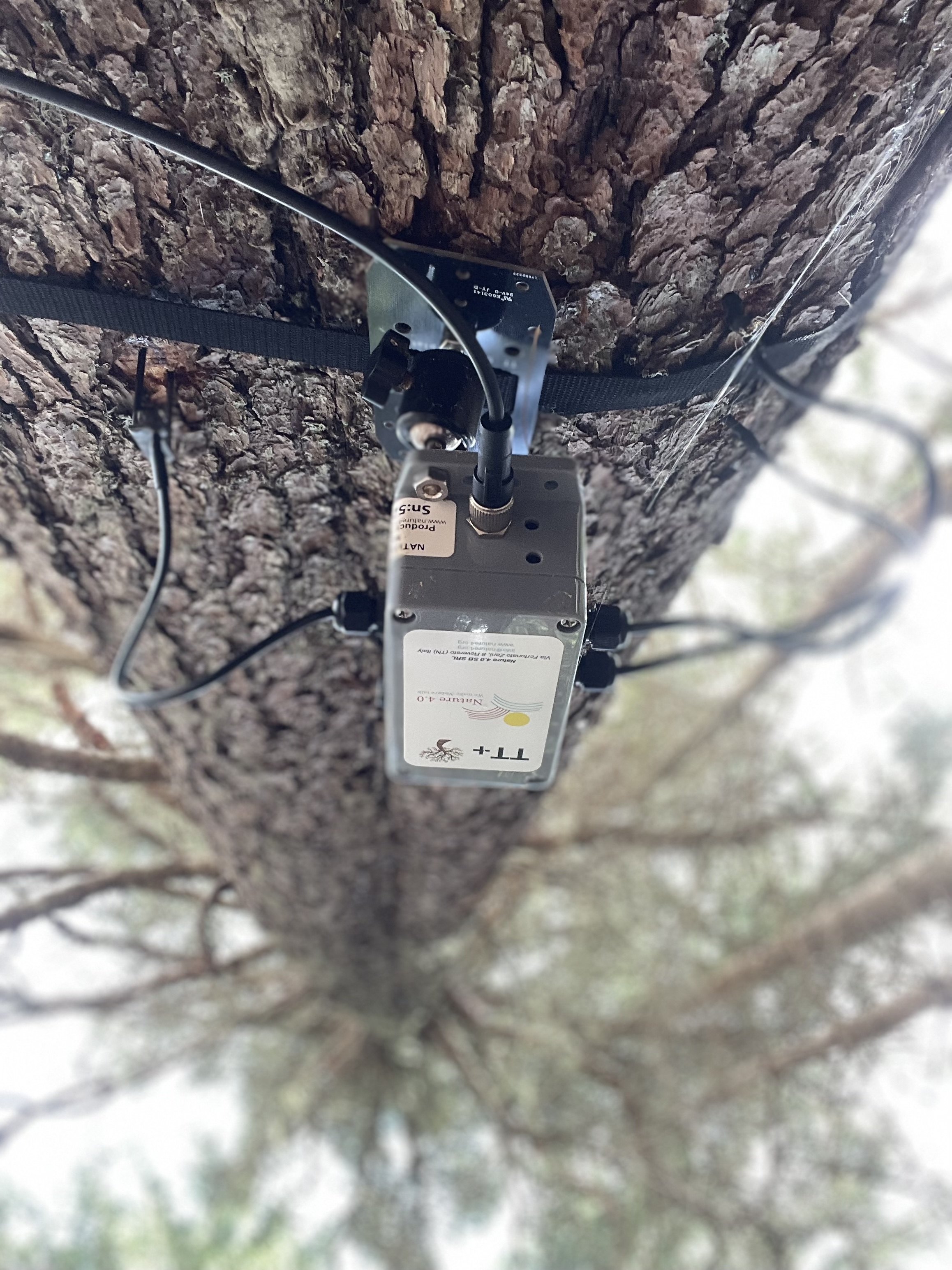'This should not be published': Scientists cast doubt on study claiming trees 'talk' before solar eclipses
Claims that spruce trees synchronize their responses to a solar eclipse were widely reported recently — but many researchers are sceptical of the results.

The idea that trees communicate with each other during an eclipse and synchronize their behavior — as has been widely reported recently — is a compelling one. The fascinating idea sprang out of research detecting bioelectric signals in spruce trees (Picea abies) in Italy's Dolomite mountains during a 2-hour-long partial solar eclipse. But many researchers aren't convinced, saying the number of trees studied is tiny and that there are more plausible explanations for the results.
Some 6,600 feet (2,000 meters) above sea level, Alessandro Chiolerio, a physicist at the Italian Institute of Technology, Monica Gagliano, an ecologist at Southern Cross University in Australia, and their colleagues attached remote sensors to three healthy spruce trees — two of about 70 years old and the other around 20 years old — and to five tree stumps.
The sensors were there to detect electrical currents created when charged molecules travel through the cells of living organisms.
"Our results demonstrated that spruce trees exhibited synchronized changes in their bioelectrical activity in anticipation of a solar eclipse," Gagliano told Live Science. "Remarkably, this synchronization began several hours before the eclipse occurred, suggesting not just a passive reaction to darkness but an active, anticipatory response."
"The strongest signs of this early response were observed in older trees, hinting at a memory-like capacity linked to their age and environmental history," she said. "This study provides the first evidence that trees in a forest can behave as a coordinated collective system — functioning more like an integrated network than just as isolated individuals."
So, what exactly is going on in this work published April 30 in Royal Society Open Science, and how seriously should we take it?
"There is strong concern among my colleagues that this paper was published," James Cahill, a plant ecologist at the University of Alberta in Canada, told Live Science. "The paper doesn't meet what I would say are the basic standards needed for science. Its sample size is three, which is very low and they have a super large number of variables that they're testing — over 10 — and you're always going to find a pattern if you do something like that."
Get the world’s most fascinating discoveries delivered straight to your inbox.
Related: Tropical tree in Panama has evolved to kill its 'enemies' with lightning
Many plants and animals respond to the day-night cycles of light and dark, so plants responding to approaching darkness shouldn't be a surprise, he said.
"If you turn off the lights in a greenhouse or at night, every plant will show reduced water transpiration and reduced photosynthesis. Is that coordination?" asked Cahill. This would also alter their bioelectrical signals, and every biological material has bioelectrical signals, he added, so there's nothing fancy in detecting changes to these.
It's also unlikely there's an evolutionary survival advantage to responding to an eclipse, Cahill pointed out, given how briefly and infrequently they occur. Instead, he thinks the plants are responding with capabilities that have evolved for a different reason. "It is very easy to imagine that sensory systems evolved for other purposes that are then hijacked in an eclipse. Plants respond to darkness and an eclipse causes darkness. But it doesn't mean that the eclipse caused the response to darkness."
And when it comes to the bioelectrical signals changing before the eclipse rather than during it, there's also a simple possible answer, he said. "Plants have elaborate sensory systems for detecting light and a lot of plants can detect UV light and blue light changes and those tend to come first across the horizon. A lot of plants will start changing their photosynthetic machinery before sunrise," said Cahill. "I'm not sure this is anything different."

"It's disappointing that this paper is getting so much press because it's just an idea and there's not much here other than assertion," said Cahill. "This could have been replicated, it should be replicated. There's no understanding of why they are focusing on electrical signals instead of the photosynthetic rate. They also didn't compare this to just night and day, which is the obvious thing to do and that's very worrisome to me."
Other researchers approached by Live Science said similar things. "I don't think anything can be concluded from an experiment that does not include replicates," Justine Karst, a forest ecologist at the University of Alberta in Canada, told Live Science.
Researchers in the field are also skeptical about the idea that older trees responded more strongly.
There are three living trees in the study and there are assertions about young versus old, said Cahill, "but they only have one young plant and it's in a different site. And it's not even young, it's 20 years old."
Asked about the small sample size, Chiolerio told Live Science how difficult it was to spend whole days working at almost 7,000 feet above sea level to attach sensors to trees when temperatures go down to 5 degrees Fahrenheit (minus 15 degrees Celsius).
"Due to the complexity of the field setup — monitoring trees 24/7 in alpine conditions — we focused on a small number of carefully selected individuals. Despite the sample size, the data were robust and consistent across trees and sites," said Gagliano. "Still, this is an early study, and we view it as a foundation for broader research."
Karst compared the new findings to experimental studies that seemed to reveal a wood-wide web in which trees communicate and share resources via underground networks of mycorrhizal fungi. She was a co-author of work published in 2023 showing that there was insufficient evidence for the idea.
"I hoped that after the wood-wide web fell apart, journalists would be more skeptical about research claiming that 'trees talk'," said Karst.
Cahill is in favor of studying plant behavior to probe whether these organisms have cognition — he is doing work in that area himself — but says the level of evidence needs to be very high before claims are made.
"How would we test cognition in plants? I'm sympathetic to the idea of a different approach, but papers like this make it really hard to do very strong science in a controversial area," said Cahill. "It's very disappointing because the Royal Society has had a great reputation. But this should not be published."
In response to questions about the study's publication, The Royal Society Open Science sent Live Science the following comment.
"All research published by Royal Society Open Science goes through thorough peer review before being accepted."
They also noted the role post-publication discussion plays in their process.
"We encourage academic debate and constructive criticism of the research published in our journals. Any reader is able to submit a comment on research published in Open Science, this will be peer reviewed and published alongside an invited reply from the original authors."
Editor's Note: This story was updated at 1:10 p.m. EDT to include comment from the Royal Society Open Science.

Chris Simms is a freelance journalist who previously worked at New Scientist for more than 10 years, in roles including chief subeditor and assistant news editor. He was also a senior subeditor at Nature and has a degree in zoology from Queen Mary University of London. In recent years, he has written numerous articles for New Scientist and in 2018 was shortlisted for Best Newcomer at the Association of British Science Writers awards.
You must confirm your public display name before commenting
Please logout and then login again, you will then be prompted to enter your display name.


